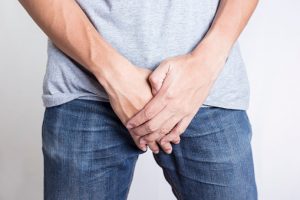
There is growing evidence that schizophrenia may be a result of an overactive immune system. The most recent findings uncovered that there is a protein that tells the brain to remove certain neural connections during childhood, increasing the risk of developing schizophrenia later on in life. Other studies have shown that higher activity among microglia, which are a type of cells that act as the body’s first line of defense. Researchers concluded that overactive microglia harm the brain by destroying connections.
Researchers from Johns Hopkins Medicine, the Sheppard Pratt Health System, and Heidelberg University in Germany conducted the recent study on candida albicans, which is normally found in the body. When it gets out of balance, it results in a yeast infection. The researchers wanted to explore if yeast infections had any effects on schizophrenia or bipolar disorder.
The researchers took blood samples from 808 people of which 261 were diagnosed with schizophrenia and 270 with bipolar disorder. The rest of participants had no history of psychological disorders. Overall, there was no connection between candida albicans and psychological disorders, but when the researchers focused on men only, they found that 26 percent of males with schizophrenia had the antibodies, compared to only 14 percent in the control group. Bipolar disorder men also had high antibody count, but the researchers attributed it to the years of homelessness.
Although the results were not found to be the same in women, the study uncovered that women with high antibody count with schizophrenia and bipolar disorder scored lower than anyone else on cognitive tests that measure immediate and delayed memory, attention skills, use of language, and visual-spatial skills.
Dr.Emily Severance, member of the Stanley Division of Developmental Neurovirology at the Johns Hopkins University School of Medicine, said in the news release, “It’s far too early to single out candida infection as a cause of mental illness, or vice versa. However, most candida infections can be treated in their early stages, and clinicians should make it a point to look out for these infections in their patients with mental illness.”
Symptoms of male yeast infection
It is not common to discuss yeast infections in males, nevertheless, yeast infections can occur just about anywhere, including the throat and mouth. Symptoms of male yeast infections include:
- Burning and itching around the head of the penis
- Redness and swelling
- Small rash-like bumps, which may have pus
- Pain during urination or sex
- Thick, lumpy discharge of the foreskin
- Unpleasant odor of the foreskin
- Difficulty pulling back the foreskin
- Indigestion
- Strong desire for sweets
Causes of yeast infection in men
Other causes of male yeast infections include overuse of antibiotics (which kill off good bacteria), an immune-suppressing illness like HIV, diabetes, corticosteroid use, being uncircumcised, and improper hygiene. Hygiene is crucial for preventing penile yeast infections, as improper washing, using scented cleaning products, and not completely drying the genitals can all contribute to a yeast infection.
Certain foods can increase the growth of yeast, too, including products like wheat, oats, barley, peanuts, corn, and red apples promote the growth of yeast in the body. Beer, by the way, can promote the growth of yeast, too.
Treatment and testing options for male yeast infection
The presentation of symptoms may prompt you to see your doctor to be examined for a yeast infection. Redness and inflammation is an obvious sign of a male yeast infection, along with the other symptoms. Your doctor may also run alternative tests to confirm diagnosis, including swabs of the glands, urine laboratory tests – especially if you are diabetic, blood tests to check glucose levels, and a biopsy (but that is rarer).
Treatment begins with proper hygiene, especially if you are uncircumcised. This includes foreskin hygiene, antifungal creams, and a single dose of Diflucan 150 mg if a yeast infection is reoccurring.
Over-the-counter medications may be beneficial as well, but if these and topical creams do not work, speak to your doctor right away.
Home remedies for male yeast infection
- Ingest yogurt or apply it topically to the area, as it contains probiotics which can help fight off yeast infections.
- Consume more garlic or apply it topically as garlic has anti-fungal and anti-bacterial properties.
- Mix tea tree oil with olive oil and apply on the area as tea tree oil is a natural anti-fungal.
- Drink cranberry juice to reduce the spread of the yeast infection.
- Soak in a warm bath with a cup of apple cider vinegar added for its antibacterial properties.
- Consume coconut oil or apply to the area.
- Mix oregano oil with olive oil and apply to the area.
- Soak the area in lemon juice mixed with warm water in order to restore pH levels.
Implementing some of these home remedies can help manage symptoms and speed up the recovery of your male yeast infection.